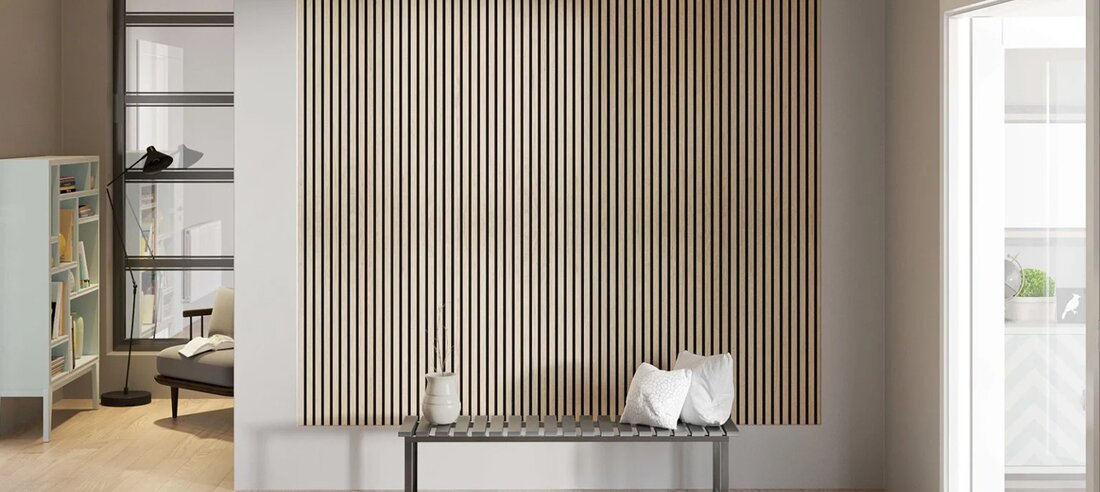Acoustic panels: an overview of function, design and application
Acoustic panels play a crucial role in designing spaces where sound quality and control are important. These panels help absorb unwanted noise and therefore improve room acoustics. The areas of application are diverse and range from professional recording studios to home theaters to office environments. Basics of Room Acoustics To understand the importance of acoustic panels, it is important to know the basics of room acoustics. Sound waves emanating from a sound source such as a speaker or a person travel through space and hit various surfaces. Depending on the properties of these surfaces, the sound waves are absorbed, reflected or scattered. …

Acoustic panels: an overview of function, design and application
Acoustic panels play a crucial role in designing spaces where sound quality and control are important. These panels help absorb unwanted noise and therefore improve room acoustics. The areas of application are diverse and range from professional recording studios to home theaters to office environments.
Basics of room acoustics
To understand the importance of acoustic panels, it is important to know the basics of room acoustics. Sound waves emanating from a sound source such as a speaker or a person travel through space and hit various surfaces. Depending on the properties of these surfaces, the sound waves are absorbed, reflected or scattered. Hard surfaces such as concrete or glass reflect sound waves strongly, which can cause echo effects and poor sound quality. Soft materials, such as those used in acoustic panels, absorb sound waves and therefore reduce reverberation and noise.
Types of acoustic panels
There are different types of acoustic panels that can be used depending on requirements and aesthetic preferences:
- Absorberpaneele: Diese Paneele sind in der Regel aus weichen, porösen Materialien wie Schaumstoff oder Mineralwolle gefertigt. Sie sind effektiv in der Absorption von Schallwellen und reduzieren Nachhall und Echo.
- Diffusorpaneele: Diffusoren sind so gestaltet, dass sie Schallwellen streuen, anstatt sie zu absorbieren. Sie tragen dazu bei, einen ausgewogenen und natürlichen Klang im Raum zu schaffen.
- Bassfallen: Diese Paneele sind speziell für die Absorption von niedrigen Frequenzen konzipiert und werden oft in den Ecken von Räumen installiert, wo sich tieffrequente Schallwellen ansammeln.
Materials and design
The choice of material for acoustic panels is crucial to their effectiveness. Modern panels use innovative materials and technologies to ensure optimal sound absorption. Some common materials are:
- Akustikschaum
- Mineralwolle
- Holzfasern
- Recyclingmaterialien
The design of the panels also varies to meet different aesthetic and acoustic needs. From simple, one-piece panels to complex, multi-layer constructions, the panels can also serve as a decorative element in interiors.
Areas of application
Acoustic panels are used in various environments:
- Heimkinos und Aufnahmestudios: Hier ist eine präzise Klangkontrolle für die Qualität der Audioaufnahmen oder des Hörerlebnisses entscheidend.
- Büros und Konferenzräume: In diesen Räumen verbessern Akustikpaneele die Sprachverständlichkeit und reduzieren Lärm.
- Öffentliche Räume wie Schulen und Theater: Hier tragen sie zur Schaffung eines angenehmen akustischen Umfelds bei.
Installation and maintenance
Installing acoustic panels is usually straightforward and can be carried out by professionals or using a DIY method. It is important that the panels are strategically placed in the room to achieve optimal results. Maintenance is usually minimal and is limited to regular dusting or cleaning.
Conclusion
Acoustic panels are an essential element in modern interior design to solve acoustic problems while providing aesthetic values. For more information about high quality acoustic panels and their application, visit acoustic panels.

 Suche
Suche
 Mein Konto
Mein Konto